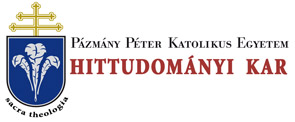Folia Theologica et Canonica 3. 25/17 (2014)
IUS CANONICUM - Michael Carragher, O.P., The sacrament of confirmation and personal development
THE SACRAMENT OF CONFIRMATION AND PERSONAL DEVELOPMENT 177 Watching documentary programmes on television filming animal life in the wild (or in safaris or protected sanctuaries) one quickly notices that four-legged creatures are either foraging for food or hunting for a sexual mate. Violence is used to protect both needs even if someone should inadvertently transgress the boundaries. Nothing else is sought not even self-made shelter from the elements as makeshift cover can usually be found conveniently (apart from the fact they may have in-built protection, e.g. tough hides or fur) and discarded as quickly or even destroyed in the process of obtaining safety, food or sex. All their sense organs are geared for these purposes by instinct and their bodily composition is designed to facilitate these functions. As the senses are principally located in the face, these non-rational animals have their faces more or less directed permanently to the ground. Exceptions are when the beasts are resting or playing with one another or with their owners. Likewise human beings have the senses positioned in the face but it is normally turned upright and people can appreciate the beauty of sensible objects for their intrinsic worth and do not usually see material entities as potential prey, hostile intruders or sex partners. The beholders often become transformed by monuments, pictures or icons or repelled by kitsch, or more commonly today corrupted and depraved by pornographic images.* 13 Frescos, paintings and mosaics appeal to tourists and pilgrims, though one must not forget that religious persecution often occurred because of sacred art.14 Arts, crafts and technology are other considerations that fascinate people of all ages but not animals. The posture of the human body is upright in standing, sitting, playing, running. If a person is constantly on all fours, then there is a medical problem. Human apes sometimes walk upright on two feet. Bonobos even seem to do it with some ease, when they need to, as when they have their hands full, but it’s not their normal mode of getting around.” Unfortunately we cannot pursue this fascinating study but the author provides a sound theory underpinning the use of language along with a core bibliography. Nothing he says undermines the insights of Aquinas. On the contrary. 13 Helen King gives a serviceable description of pornography in the Oxford Classical Dictionary edited by Hornblower, S. and Spawforth, A., Oxford 2003. 1226: “Pornography has been described as material which presents people - particularly women - as mute, available, and subordinate as sexual objects, often shown in a context of violence”. See the court case in the America, Roth v US 354 US 476,487 (1957) “appealing to prurient interest” was the test established. See also John-Stevas, N. St., Obscenity and the Law, London 1956. Rappeler, S., The Pornography of Representation, Oxford 1986. Hunt, L. (ed.), The Invention of Pornography Obscenity and the Origins of Modernity, New York 1993. George, R. P., In Defense of Natural Law, Oxford 1999, chapter 10: “Making Children Moral, Pornography, Parents and the Public Interest”. Clor, H. M., Public Morality and Liberal Society Essays on Decency, Law, and Pornography, London 1996, chapter 5. 14 Freedberg, D., The Power of Images Studies in the History and Theory of Response, Chicago 1989. Aston, M., England’s Iconoclasts Volume 1 Laws against Images, Oxford 1988. Louth, A., Greek East and Latin West The Church AD 681-1071, New York 2007, chapter 2. Iconoclasti!: First phase and Aftermath. Duffy, E., The Stripping of the Altars, New Haven 2005.
